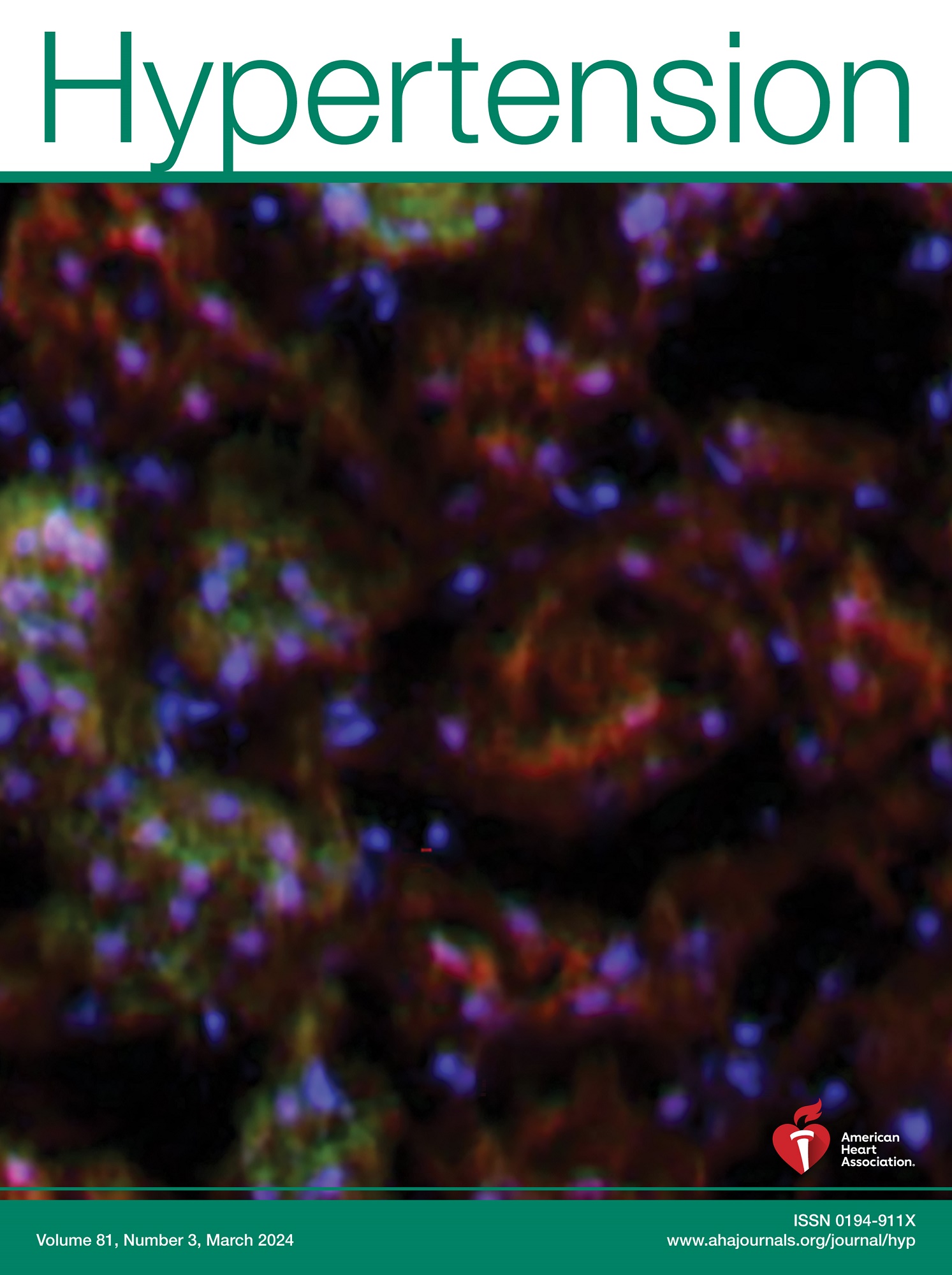表观遗传组蛋白β-羟基丁酸化对大鼠肾保护作用的影响。
IF 8.2
1区 医学
Q1 PERIPHERAL VASCULAR DISEASE
引用次数: 0
摘要
之前,我们已经证明酮体β-羟基丁酸酯在达尔盐敏感大鼠中是一种有效的降压和肾保护代谢产物。然而,β-羟基丁酸盐产生这些有益作用的机制尚未得到充分研究。在这里,我们专注于确定β-羟基丁酸盐的肾保护作用是否由于其已知的通过组蛋白β-羟基丁酸修饰染色质的表观遗传重塑能力。方法采用与先前发现β-羟基丁酸酯的肾保护作用相同的动物实验方法。简单地说,将断奶后的雄性和雌性Dahl盐敏感大鼠分为2组,分别添加或不添加1,3-丁二醇,持续6周。安乐死时,定量循环β-羟基丁酸。对肾脏匀浆进行组蛋白3赖氨酸9 β-羟基丁基化、染色质占用、转录组学和蛋白质组学分析并进行验证。结果添加1,3-丁二醇的大鼠循环β-羟基丁酸增加,肾组蛋白β-羟基丁酸化增加,染色质重构明显。值得注意的是,与脂质分解代谢相关的基因组区域主要处于开放的染色质结构中,导致主动转录和翻译。活性转录和翻译中表达最高的基因是Hmgcs2(3-羟基-3-甲基戊二酰辅酶a合成酶2),该基因负责线粒体中β-羟基丁酸盐的生物合成。相比之下,染色质结构更紧凑的区域含有免疫功能基因Ptprc(蛋白酪氨酸磷酸酶受体C型)和Lcp1(淋巴细胞胞浆蛋白1),它们被抑制。结论肾表观遗传组蛋白β-羟基丁基化是高血压大鼠能量代谢和免疫功能同时发生转录调控的新机制,并参与肾保护。本文章由计算机程序翻译,如有差异,请以英文原文为准。
Epigenetic Histone β-Hydroxybutyrylation Contributes to Renoprotection by β-Hydroxybutyrate in the Dahl Rat.
BACKGROUND
Previously, we demonstrated that the ketone body, β-hydroxybutyrate, is a potent antihypertensive and reno-protective metabolite in Dahl Salt-Sensitive rats. However, the mechanism by which β-hydroxybutyrate confers these beneficial effects is understudied. Here we focused on determining whether the reno-protective effect of β-hydroxybutyrate is due to its known ability to epigenetically remodel chromatin via histone β-hydroxybutyrylation.
METHODS
We used the same animal protocol previously used for the discovery of the reno-protective effect of β-hydroxybutyrate. Briefly, postweaning, male and female Dahl Salt-Sensitive rats were split into 2 groups and supplemented with or without 1,3-butanediol for 6 weeks. At euthanasia, circulating β-hydroxybutyrate was quantitated. Renal homogenates were examined for histone 3 lysine 9 β-hydroxybutyrylation, chromatin occupancy, transcriptomic and proteomic profiles with validations.
RESULTS
Rats supplemented with 1,3-butanediol had higher circulating β-hydroxybutyrate, renal histone β-hydroxybutyrylation, and significant remodeling of chromatin. Notably, regions of the genome associated with lipid catabolism were predominantly in an open chromatin configuration, leading to active transcription and translation. The most highly upregulated gene actively transcribed and translated was Hmgcs2 (3-hydroxy-3-methylglutaryl CoA ssynthase 2), a gene responsible for the biosynthesis of β-hydroxybutyrate in mitochondria. In contrast, regions with more compact chromatin structures contained immune function genes, Ptprc (protein tyrosine phosphatase receptor type C) and Lcp1 (lymphocyte cytosolic protein 1), which were suppressed.
CONCLUSIONS
These results reveal that renal epigenetic histone β-hydroxybutyrylation is a novel mechanism by which transcriptional regulation of both energy metabolism and immune function occur concomitantly and contribute to renoprotection in the hypertensive Dahl rat.
求助全文
通过发布文献求助,成功后即可免费获取论文全文。
去求助
来源期刊

Hypertension
医学-外周血管病
CiteScore
15.90
自引率
4.80%
发文量
1006
审稿时长
1 months
期刊介绍:
Hypertension presents top-tier articles on high blood pressure in each monthly release. These articles delve into basic science, clinical treatment, and prevention of hypertension and associated cardiovascular, metabolic, and renal conditions. Renowned for their lasting significance, these papers contribute to advancing our understanding and management of hypertension-related issues.
 求助内容:
求助内容: 应助结果提醒方式:
应助结果提醒方式:


